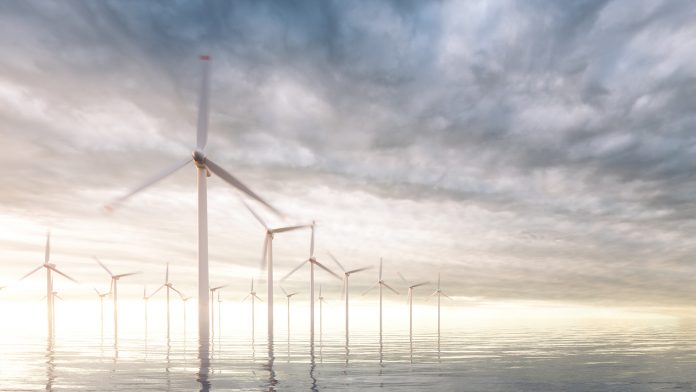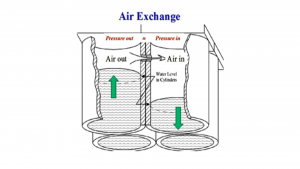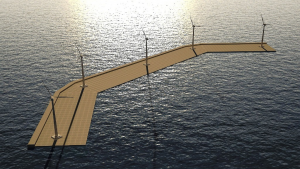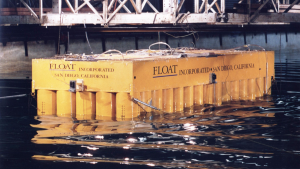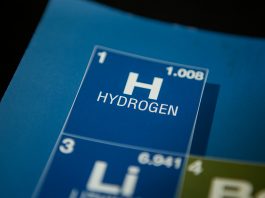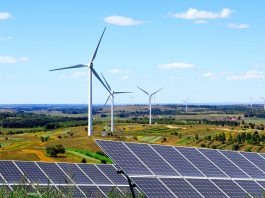Float Europe’s® floating platforms – the Pneumatically Stabilized Platform and Rho-Cee Wave Energy Converter’s performance in tank tests show they can efficiently contribute to the renewable energy transition.
Float Europe® (Float Marine Technologies Europe Limited) has developed a number of large floating platforms to assist Ireland’s renewable energy transition and meet Europe’s 2030 sustainable goals.
The company provides project development services that include research, design, and development of marine technology products specialising in very large floating platforms. Float’s immediate objective is to publicise the availability of these innovative marine technologies and their multi-purpose applications and to help understand how to implement and use them properly.
Float Europe’s principal products are the Pneumatically Stabilized Platform (PSP), which is a practical and cost-effective floating motion-stable foundation for several applications, and the Rho-Cee Wave Energy Convertor (WEC), which guarantees an unprecedented wave-to-wire efficiency with low maintenance and long life in the delivery of energy.
Furthermore, the recent Offshore Ocean Energy System combines the Rho-Cee WEC with wind turbines, current turbines, and a large energy storage capability with a supporting PSP.
The durability of floating platforms
Floating platforms have the ability to capture and convert renewable energies. This includes energy from wind, wave, and ocean currents. However, these platforms differ from other products on the market, as they have durable abilities. For example, a floating platform can be moved if market conditions change, and it can also be built remotely from its operating site to be connected to pre-installed moorings, pipes, and power lines.
Moreover, other benefits of Float’s platforms include:
• They require much less construction material than a traditional gravity-based structure (GBS);
• They can be easily disposed of when they come to the end of their long and useful life; and
• The floating platform has small motions, which are compatible with docked tankers.
The Pneumatically Stabilised Platform
The PSP floating platform system permits the design and construction of very large floating platforms of unlimited size. PSPs may be deployed in regions with extreme wave heights and achieve more stability than achieved by any other known marine technology.
The PSP is a patented design concept for large floating platforms in which the flotation force is derived from an array of open-bottom cylinders retaining pressurised air that displaces the water.
The PSP consists of:
• A monolithic platform;
• A stable with variable deck load capabilities;
• It is modular, mobile, and extensible;
• Wave attenuation results in calm water zone leeward;
• It is environmentally-friendly; and
• It has a long life with minimal hull maintenance and no out-of-service time.
Furthermore, the PSP has a structural stability that allows any standard offshore wind turbine to be easily deployed, and the wind turbine foundations correspond to marine demands. In addition, the platform offers access, maintenance, and operations similar to those found onshore; a transformer station in-the-dry; storage space for spare and repair parts and maintenance availability reduce ‘down time’ for all onboard equipment; and the benefit of no new specialised vessels being required to transport equipment or maintenance personnel directly from ports to the platform.
Other benefits of the PSP floating platform system include:
• The entire wind farm is operational once the PSP is in place;
• They reduce weather window delays;
• They are resistant to corrosion;
• Periodic dry-docking for maintenance is unnecessary;
• A life cycle of more than 70 years; and
• Impact of stability class of turbine design (turbine weight, tower top motion, controls complexity, and maximum healing angle).
The Offshore Energy Ocean System
The Offshore Ocean Energy System is constructed using pre-stressed, reinforced concrete, and the life expectancy is estimated at more than 70 years. The prolonged life expectancy of this floating platform is a definite advantage, economically and productively speaking, as wind turbines are estimated to have a life expectancy of just 25 years, meaning that the Offshore Ocean Energy System would permit the replacement of ‘end-of-life’ wind turbines without costly platform re-construction/replacement.
Additionally, the Offshore Ocean Energy System does not require periodic dry-docking for repairs or maintenance.
For the capture of renewable energies, the floating platform is composed of:
• Pneumatically Stabilised Platform (PSP) – Stable, monolithic, modular, and mobile platform with variable deck load capacities;
• PSP + Rho-Cee Wave Energy Converter (pC WEC) – Designed to collect wave energy and convert it to usable electricity;
• PSP + Potential Energy Storage (PES) – Conversion and storage of ‘surplus’ electricity
production to compressed air stored within specific PSP cylinders designed for PES; and
• Alternate storage methods can also be applied – reconversion of stored ‘surplus’ electricity production to grid-usable electricity.
How can these systems be integrated with turbines to provide renewable energy?
A farm of wind turbines can be structurally integrated into selected cylindrical elements of an offshore-sited floating platform, thereby forming a like-sited ‘wind farm’ wherein the wind turbine units may be readily erected, accessed, inspected, and maintained in a manner similar to that practiced on land.
Moreover, hydrokinetic turbines can be integrated with these floating platforms in order to provide renewable energy sources. The integration forms an ‘ocean current farm’, where the current hydrokinetic turbine units may be retractably raised to deck level and so may be readily accessed, inspected, maintained, repaired and/or replaced.
By positioning complementary and multiple renewable energy applications on the same deep-ocean offshore floating platform, the capital investment costs can be amortised more rapidly thanks to the PSP floating platform.
Previous tank test results contracted by the U.S. Department of Defense DARPA & ONR resulted in the validation of the PSP as a highly stable offshore deep-water ocean floating platform capable of withstanding extreme ocean states.
Tank tests showed that the technology is viable for producing renewable energy
In order to prove their scalability within the renewable energy sector, the floating platforms have undergone a series of governmental tank tests. The characteristics of the platforms were confirmed and validated by these tests.
Floating by variable buoyancy, as used in the PSP, had already been utilised back in the 1930s on the Oakland Bay Bridge in California. The bridge was constructed with cylinders of steel-reinforced concrete and the use of compressed air, showing that flotation by use of technology of variable buoyancy functioned well.
Following extensive tank tests of the PSP floating platform performed in the test basin at Escondido, California and J.K.K. Look Laboratory, Ocean Engineering Department, University of Hawaii, the results confirmed and validated the data cited in the patent (national & international) of the PSP, concerning a rapid and efficient attenuation of waves.
The results were outstanding, with wave heights reaching over 15m and the attenuation of waves reaching between 50% and 94%, depending on the time period of the waves.
Furthermore, tests showed that PSP floating platforms of 300m x 300m (90,000m² or nine hectares) will be stable and comfortable in all weather conditions, except in the event of hurricanes or other extremely unstable weather conditions. Moreover, on a PSP of the size foreseen by the extension on the sea project of the Principality of Monaco (±15hectares), ten-storey buildings can be constructed, without perceptible movement by their habitants, except in the event of a hurricane.
Please note, this article will also appear in the fourteenth edition of our quarterly publication.

